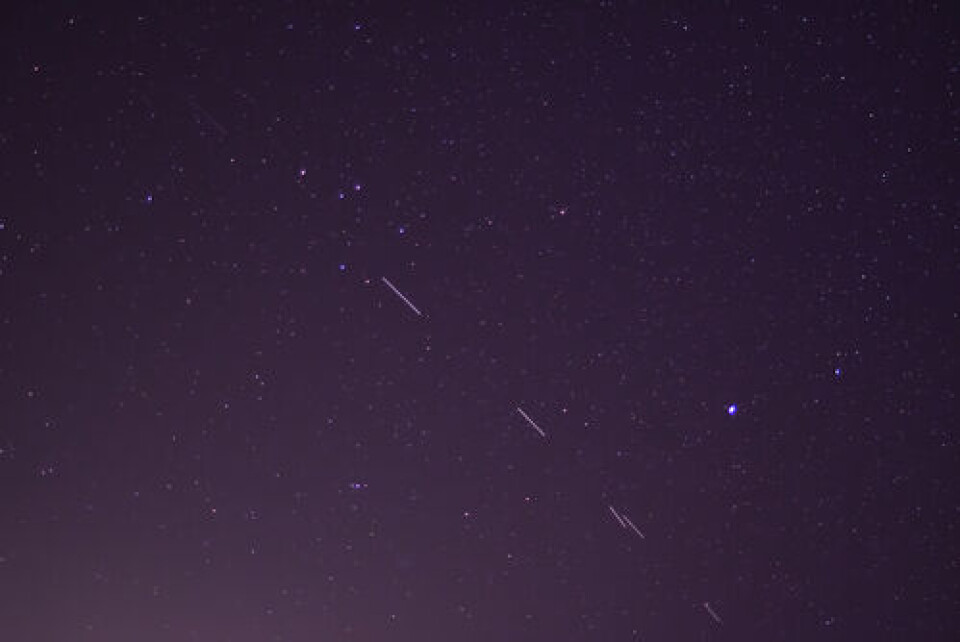-
French woman given one-year sentence for hiring men to evict squatter
Homeowner from south-west found guilty by Bordeaux criminal court
-
Drinking tap water restricted for children in south-west France communes
Haute Garonne prefecture says the measure is precautionary and due to high chlorate levels
-
‘Trustworthy’ media label idea from Macron causes political storm in France
Comments prompted fierce political backlash from right but government insists it was taken out of context
Space: Mysterious ‘streak’ of light seen in night sky over France
The line in the sky was particularly visible from Marseille and Toulouse, with an astrophysicist calling it ‘quite spectacular’

A mysterious ‘streak’ of light was seen in the night sky over France last night (February 13) and on Sunday night, prompting surprise from some internet users, especially around Marseille (Bouches-du-Rhône, PACA).
The string of light was seen at around 19:30 by people in the southeastern city, some of whom took to Twitter to ask if it could be connected to NASA, or even the Chinese spy balloons that have been seen above the Americas in recent weeks.
People in Toulouse, and in and around Perpignan also noticed the lights.
However, the light has now been revealed to come from a new batch of Elon Musk’s Starlink satellites.
Astrophysicist Eric Lagadec told France 3: “They are quite spectacular when you see them for the first time.”
Tonight, I finally saw a set of Starlink satellites in the night sky over southern France.#starlinksatellites #Starlink pic.twitter.com/aetmNF91KN
— Michael P. Mahoney (@MrAtomic) February 13, 2023
The lights come from around 50-60 Starlink satellites that were put into orbit by the billionaire’s internet company SpaceX on February 12. They are so visible because they are in a ‘low orbit’ of 400 km altitude, compared to usual satellites at 36,000 km.
Mr Lagadec said: “They are lower, and that’s why, during their launch, you can see them shining, lit up by the Sun…they are sent in groups of 60, so it looks like a kind of little train that is visible for a few minutes.”
SpaceX promises fast internet from wherever you are on the planet, and is particularly used by people in rural or remote areas who cannot get fast internet access any other way. The low orbit reduces connection delays and makes communications faster.
The service launched in France in May 2021.
Read more: Starlink satellites bring Wi-Fi to rural France
In total, SpaceX has received authorisation to launch 42,000 minisatellites into the sky, aiming to offer high speed internet and instant telecommunications. Several thousand are currently in orbit.
However, some astronomers have concerns about the practice.
Mr Lagadec said: “You have these satellites that are brighter than the stars you can see, which draw large streaks on our images, they are parasites for radio telescopes. [These telescopes] are installed in the middle of deserts so they have no human interference, and then they end up with these parasitic satellites!”
The UN’s space committee, Copuos, is already investigating the company’s practices after astronomers called for a debate over the peaceful use of space, and possible light and radio pollution caused by satellite ‘mega constellations’.
The website findstarlink.com shows all of the planned passages of the Starlink satellites, and lets you track their progression in real-time from across the planet.
Elon Musk has courted controversy in recent days over reports that he has cut off access to Starlink in Ukraine, due to the internet’s suspected use in helping to control combat drones. A spokesperson from SpaceX said that the system was “never intended to be used as a weapon”.
Related articles
Musk’s Starlink internet growing popular in France: Your experiences
























